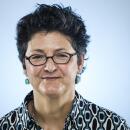L.A. Steps Out With a Flourish in Its Marathon
- Share via
For about 11,000 runners in Sunday’s Los Angeles Marathon, the Southern California promise became a reality--the opportunity to attain celebrity, however fleeting.
This attention was assured and the loneliness of the long distance runner was forgotten. A fleet of 26 cameras was pressed into service by a local television station, a truck filled with photographers roamed the course and reporters from national and international newspapers and magazines jotted notes in exhausting detail.
This was not the first marathon to be run in Los Angeles. It was, however, the first to bear the official approval of the City Council. Whether this particular 26.2-mile race will catch hold and, as its organizers hope, rekindle the city’s Olympic spirit, is speculative. This much can be said, however; Sunday’s race was the largest, glitziest, rowdiest yet.
The L.A. Marathon was a party to which runners and spectators were invited. It was a spectacle that ranged from the gaudy to the crass. No opportunity for advertising or promotion went unused. The Exposition Park area resembled a trade show, with booths offering samples of everything from suntan lotion to breakfast cereal. The U.S. Air Force displayed a scale model jet fighter, the Navy countered with a pint-sized aircraft carrier.
And, as the runners from 48 states and 28 nations jogged under the starting line banner near Figueroa Street and Exposition Boulevard, they reveled in the cheers of the assembled crowd.
And everywhere there was movement; from the last-minute jog in the cool morning air to the platoon of “jazzercize” adherents vigorously gyrating in front of a gas station.
A wall of uniformed Marines was set at the starting line to hold back the wave of runners, all straining to gain an extra inch.
Finally, after nondenominational prayers and a musical interlude from a curb-side chorus, the race began. That is to say, runners at the front of the blocks-long pack dashed off, while runners near the tail end crawled. It was five minutes before the last runners reached even the starting line.
The runners were cheered on by USC students who hung out of windows, perched on ledges and stood on roofs of a university dormitory complex immediately across from the start.
While the crowd applauded and hooted all the runners with equal gusto, they lavished their greatest volume on a pair of runners who jogged along while holding large cardboard letters--”L A”--aloft. The last starter was a woman in pink running shorts who ran the race pushing her infant daughter in a stroller.
Wave after wave of runners broke from the start and began wending their way across several City Council districts, each with a welcoming committee. The route was a fast, rolling loop that allowed visiting runners to see the city’s sights from a street level. The race also afforded shopkeepers and entrepreneurs ample opportunity to peddle. Capitan Burger on Figueroa, a few steps from the start, opened two hours early to cash in. It reported a brisk business.
The course took the runners through Little Tokyo, where the water station was manned by volunteers from the Japanese Community Pioneer Social Service Center. In Chinatown, dragon dancers capered on the streets and massive explosions of firecrackers startled some runners. The lead runners were met with enthusiastic cheering along the route.
Male, Female Winners
Encouragement can make a difference and the winners said the crowds helped them. Ric Sayre of Ashland, Ore., won the men’s race in 2 hours 12 minutes and 59 seconds. Nancy Ditz of the San Francisco suburb of Woodside won the women’s race in 2:36:27.
The race passed through Hollywood; passed expensive homes in Hancock Park where residents of one neighborhood were serving buffet brunches on well-tended lawns; passed the Wilshire Country Club where members ventured beyond the club gates, grasping cocktails while peering at the sweaty runners.
While runners were strung for miles along this city of freeways, scarcely any disruption to traffic flow was reported. Brooks Raybourne of the Los Angeles Police Department’s Central Traffic Division reported, “Everything went smoothly.”
Aside from the several bicycles, skateboards and dogs that wandered onto the course, a few vehicles managed to defy roadblocks, traffic patrolmen, race marshals and common sense and got onto the course. At one point late in the race, a woman driving a travel-worn sedan somehow banged her way onto the course and fell in behind the lead runner, Sayre. As she joined the race, she cut off not only several official vehicles, but she blocked second-place runner Gidamis Shahanga’s path.
In less than a minute, the bewildered motorist was surrounded by police vehicles and forced to make a sharp right turn to leave the course.
“At last Los Angeles has a marathon,” said women’s winner Ditz. “It’s about time.”
Times staff writer Elliott Teaford contributed to this story.
More to Read
Sign up for Essential California
The most important California stories and recommendations in your inbox every morning.
You may occasionally receive promotional content from the Los Angeles Times.











